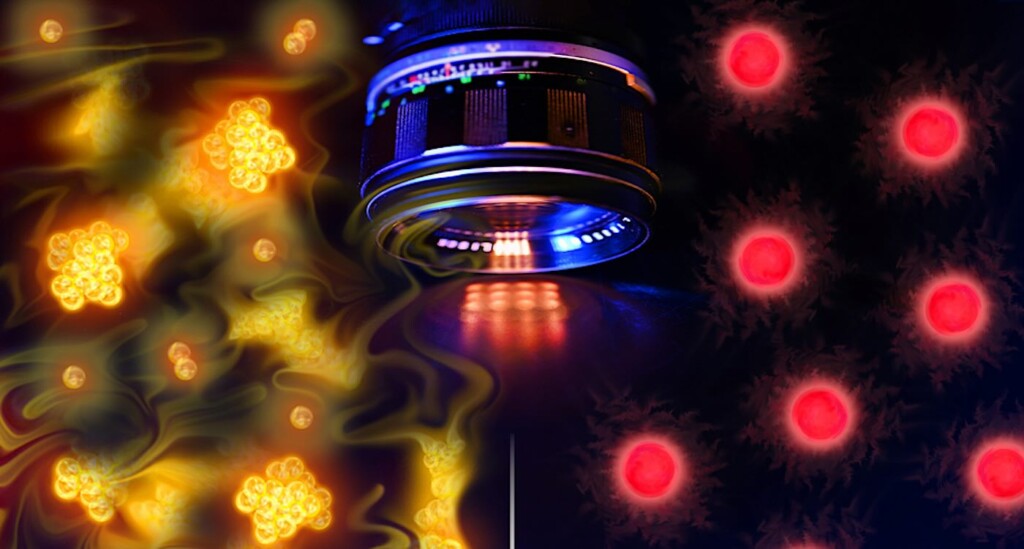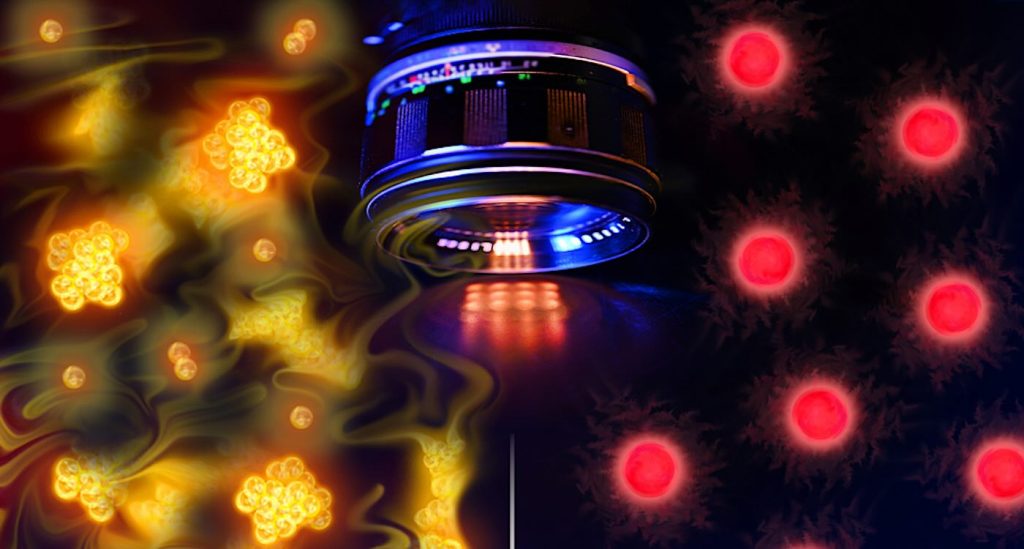
MIT physicists have captured the first images of individual atoms freely interacting in space. The pictures reveal correlations among the “free-range” particles that until now were predicted but never directly observed. Their findings will help scientists visualize never-before-seen quantum phenomena in real space.
The images were taken using a technique developed by the team that allows a cloud of atoms to move and interact freely until a lattice of light is turned on which briefly freezes the atoms in their tracks. Finely tuned lasers briefly illuminate the suspended atoms, creating a picture of their positions before the atoms naturally dissipate.
The physicists sought to compare different types of atoms, including “bosons,” which bunched up in a quantum phenomenon to form a wave. They also captured atoms known as “fermions” in route to pairing-up in free space — a key mechanism that enables superconductivity.
“We are able to see single atoms in these interesting clouds of atoms and what they are doing in relation to each other, which is beautiful,” says Martin Zwierlein, a Physics Professor at MIT.
Never Seen Before
A single atom is about one-tenth of a nanometer in diameter, which is one-millionth of the thickness of a strand of human hair. Unlike hair, atoms behave and interact according to the rules of quantum mechanics; it is their quantum nature that makes atoms difficult to understand. For example, we cannot simultaneously know precisely where an atom is and how fast it is moving.
Current imaging techniques only allowed you to see the overall shape and structure of a cloud of atoms—like looking at a cloud in the sky, but not being able to see the individual droplets making up the cloud.
RELATED BREAKTHROUGH: New Class of Matter Behaves Like a Solid and a Granule in Way Never Seen Before
The new technique is called “atom-resolved microscopy” and involves first corralling a cloud of atoms in a loose trap formed by a laser beam, then flashing light that freezes the atoms in their positions, while a second laser illuminates the suspended atoms, revealing their individual positions.
“It’s the first time we do it in-situ, where we can suddenly freeze the motion of the atoms when they’re strongly interacting, and see them, one after the other,” Zwierlein told MIT News. “That’s what makes this technique more powerful than what was done before.”
Bunches and pairs
The team applied the imaging technique to directly observe interactions among both bosons and fermions. Photons are an example of a boson, while electrons are a type of fermion. Atoms can be bosons or fermions, depending on their total spin, which is determined by whether the total number of their protons, neutrons, and electrons is even or odd. In general, bosons attract, whereas fermions repel.
Zwierlein and his colleagues first imaged a cloud of bosons made up of sodium atoms. At low temperatures, a cloud of bosons forms what’s known as a Bose-Einstein condensate — a state of matter where all bosons share one and the same quantum state. MIT’s Ketterle was one of the first to produce a Bose-Einstein condensate, of sodium atoms, for which he shared the 2001 Nobel Prize in Physics.
Zwierlein’s group, which published their findings in the journal Physical Review Letters, now is able to image the individual sodium atoms within the cloud, to observe their quantum interactions. It has long been predicted that bosons should “bunch” together, having an increased probability to be near each other. This bunching is a direct consequence of their ability to share the same quantum mechanical wave—a wave-like character first predicted by physicist Louis de Broglie, which sparked the beginning of modern quantum mechanics.
MORE MIT MARVELS: MIT Makes ‘Astonishing’ Discovery That Light Can Vaporize Water Without Heat–for Clean Energy and Desalination
“We understand so much more about the world from this wave-like nature,” Zwierlein says. “But it’s really tough to observe these quantum, wave-like effects. However, in our new microscope, we can visualize this wave directly.”
The team also imaged a cloud of two types of lithium atoms. Each type of atom is a fermion, that naturally repels its own kind, but that can strongly interact with other particular fermion types. As they imaged the cloud, the researchers observed that indeed—a coupling that they could directly see for the first time.
“This kind of pairing is the basis of a mathematical construction people came up. But when you see pictures like these, it’s an object that was discovered in the mathematical world,” says study co-author Richard Fletcher, an MIT assistant professor of physics. “So it’s a very nice reminder that physics is about physical things. It’s real.”
QUANTUM REALM CONFIRMED: The Quantum Realm’s ‘Fifth State of Matter’ is Observed in Space For the First Time
Going forward, the physicists will apply their imaging technique to visualize more exotic and less understood phenomena, such as “quantum Hall physics” — situations when interacting electrons display novel correlated behaviors in the presence of a magnetic field.
“That’s where theory gets really hairy — where people start drawing pictures instead of being able to write down a full-fledged theory because they can’t fully solve it,” Zwierlein says. “Now we can verify whether these cartoons of quantum Hall states are actually real. Because they are pretty bizarre states.”
(Edited from media release by Jennifer Chu | MIT News)
SHARE THE QUANTUM BREAKTHROUGH With Science Lovers on Social Media…

